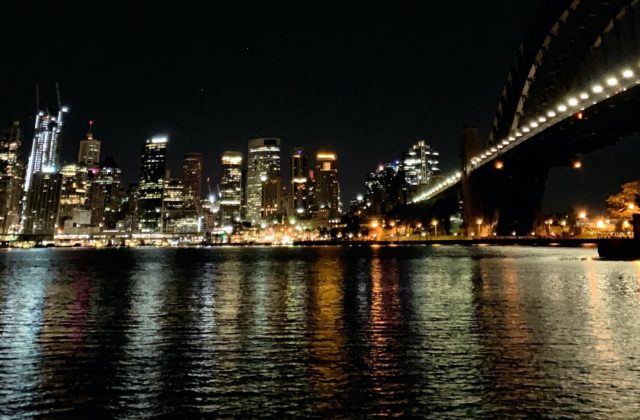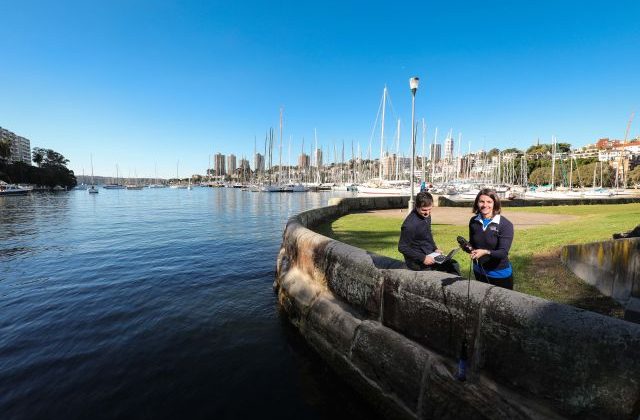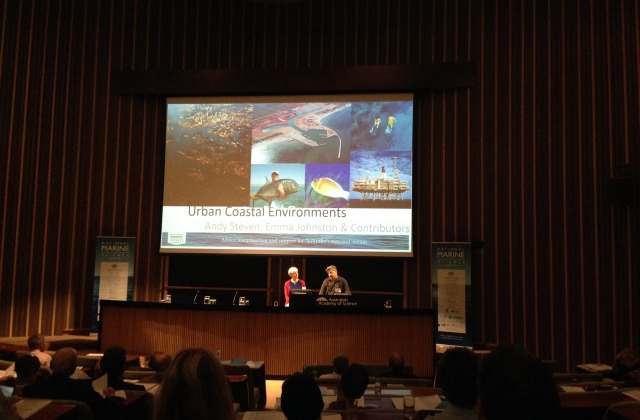ECOLight
Katie recently attended “ECOLight” – a European Union Foresight Workshop for ‘horizon planning’ at the University of Pisa from 16th-23rd January 2020. The workshop was hosted by Dr Elena Maggi and Professor Lisandro Benedetti-Cecchi (Vice Rector) in the Department of Biology. The topic of workshop was “Emergent impacts on coastal areas: adding the role of light pollution to the management and protection of ocean commons”.
The workshop began with a mini-symposium for the Department of Biology involving all of the workshop attendees. Katie presented a talk with Dr Mariana Mayer-Pinto (UNSW) entitled “Mapping the extent and potential impacts of ALAN in Sydney Harbour”. This included work from past and present students on the topic of light pollution. The symposium stimulated much discussion about how we measure and manipulate light pollution for ecological surveys and experiments. The discussion benefited greatly from having a mix of disciplines in the room from marine to freshwater ecology and astronomers to astrophysicists.
Following the symposium, we focused on 3 objectives, 1) preparing a position paper on the state of current knowledge about light pollution in coastal systems; 2) developing a global network of coastal ALAN researchers; and 3) outlining plans for a global experiment that would be done by all workshop attendees.
We formed the Global artificial Light Ocean NetWork (GLOW); a collaborative network of scientists studying the potential effects of artificial light at night (ALAN) on coastal assemblages colonizing artificial structures. GLOW is conducting surveys to quantify the intensity and quality of night lightings and their effects on the abundance of intertidal algae and invertebrates.
GLOW currently includes partners from eight countries (Australia, Chile, Croatia, France, Ireland, Italy, Spain, UK):
- University of Pisa – Italy (resp. E. Maggi / I. Bertocci)
- SZN – Italy (resp. G. Franzitta)
- RBI – Croatia (resp. L. Ivesa)
- CNRS Nice – France (resp. F. Rossi)
- Station Biologique Roscoff – France (resp. D. Davoult)
- ULPGC – Spain (resp. F. Tuya)
- Plymouth Marine Laboratory/University of Plymouth (resp. A. Queiros / T. Davies)
- UCD – Ireland (resp. T. Crowe)
- UNSW Sydney/Macquarie University – Australia (resp. M. Mayer Pinto / K. Dafforn)
- Universidad Andrés Bello – Chile (resp. C. Duarte)
Grant success with City of Sydney!
A Sydney Harbour Research Program initiative led by Dr Ana Bugnot to develop end-of-pipe bioremediation for stormwater pollution has been awarded a City of Sydney Innovation Grant. This is part of our larger research theme of sediment rehabilitation for healthy harbours.
Sydney Harbour provides important socio-economic amenities and supports significant biodiversity, but the health of the Harbour is threatened by pollution. Stormwater discharges represent the main source of contaminants. Stormwater picks up contaminants on its way into the Harbour, which are mostly retained in sediments close to stormwater infrastructure (i.e. drains and canals). In times of heavy rainfall, wastewater overflows can also enter the stormwater system, adding to the cocktail of contaminants. With more extreme weather events predicted under climate change, the likely increase in stormwater runoff and pollution is an imminent threat to waterways. The significant amount of impervious surfaces in the City of Sydney jurisdiction exacerbates the problem of stormwater discharges into Sydney Harbour.
Burrowing animals (i.e. bioturbators) on the seabed play an essential role in the natural remediation of sediment contaminants and associated improvements in water quality. These animals have been mostly lost from Sydney Harbour sediments due to contamination, trampling and overfishing. In other jurisdictions, managers are reintroducing bioturbators at large scales to stimulate sediment processes and improve waterway health, but such strategies have yet to be attempted in Australia.
Remediation of sediments involves dredging out contaminated sediments and replacing them with new, clean sediment. Another strategy includes ‘capping’ contaminated sediments with clean sediments, but this technique is often not applicable to shallow areas. These methods are, however, rarely used as they are expensive and logistically challenging.
This project aims to design a cost-effective method by which the natural remediation capabilities of living organisms are utilise, while restoring the ecological diversity of the Harbour.
Read more here: https://news.cityofsydney.nsw.gov.au/articles/sea-creatures-come-back-to-sydney-harbour
National Marine Science Symposium
National Marine Science Symposium, Canberra, 25-26 Nov 2014.
Marine scientists from all over Australia attended the Shine Dome this week to hear about the white papers submitted to the National Marine Science Committee as part of a National Marine Science Plan. White papers were classified under 8 major themes identified from Marine Nation 2025:
Sovereignty, security and natural hazards
Biodiversity conservation and ecosystem health
Professor Emma Johnston (UNSW & SIMS) and Dr Andy Steven (CSIRO) introduced urban coastal environments. Our white paper submission fell in this theme and explored the knowledge gaps and future challenges relating to marine urban development and green engineering. A copy of our white paper is accessible here.



